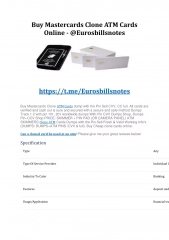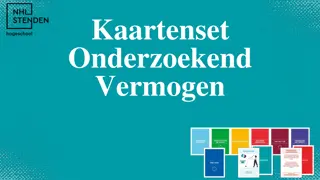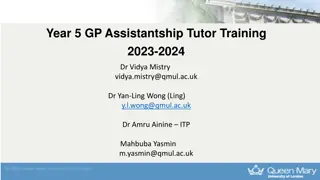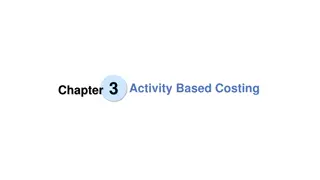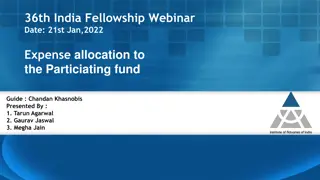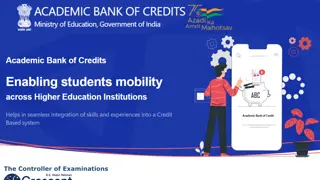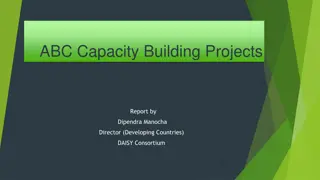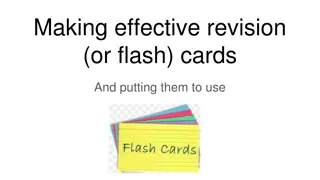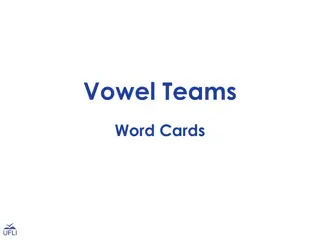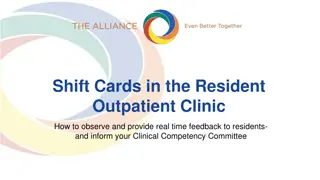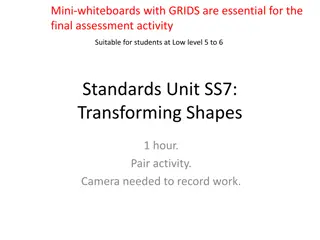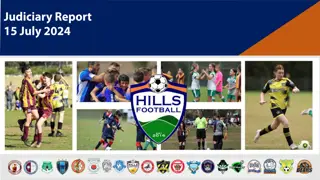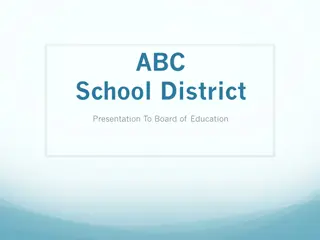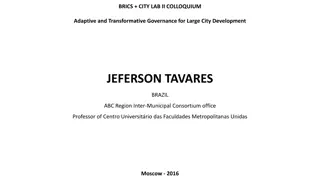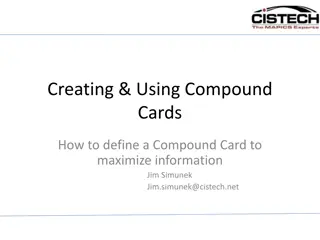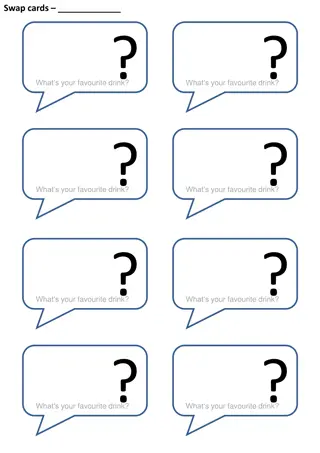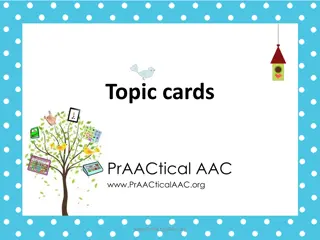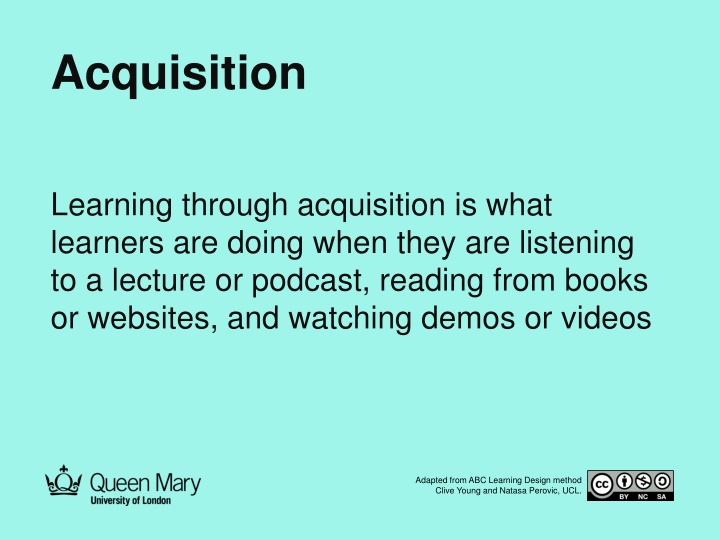
Effective Learning Strategies in Digital Education
Explore different learning approaches in digital education, including Acquisition, Collaboration, Discussion, and Investigation. Engage in listening, reading, watching, and interactive activities to enhance your knowledge acquisition. Utilize digital tools and platforms such as QMplus for effective collaboration and discussions. Enhance your learning experience through a variety of methods tailored to digital technology.
Download Presentation

Please find below an Image/Link to download the presentation.
The content on the website is provided AS IS for your information and personal use only. It may not be sold, licensed, or shared on other websites without obtaining consent from the author. If you encounter any issues during the download, it is possible that the publisher has removed the file from their server.
You are allowed to download the files provided on this website for personal or commercial use, subject to the condition that they are used lawfully. All files are the property of their respective owners.
The content on the website is provided AS IS for your information and personal use only. It may not be sold, licensed, or shared on other websites without obtaining consent from the author.
E N D
Presentation Transcript
Acquisition Learning through acquisition is what learners are doing when they are listening to a lecture or podcast, reading from books or websites, and watching demos or videos Adapted from ABC Learning Design method Clive Young and Natasa Perovic, UCL.
Collaboration Learning through collaboration embraces mainly discussion, practice, and production. Building on investigations and acquisition it is about taking part in the process of knowledge building itself Adapted from ABC Learning Design method Clive Young and Natasa Perovic, UCL.
Acquisition Conventional method Digital technology Reading books, papers Reading digital documents and resources via QMplus books, pages, files, Talis online reading lists. Listening to teacher presentations face-to- face, lectures Learning from interactive content via H5P, interactive content tools on QMplus. Watching demonstrations, master classes Watching animations, videos, lecture recordings via QMplus Media, Q- Review, Box of Broadcasts. Reading books, papers; Guides are available at https://elearning.qmul.ac.uk/tag/acquisition/
Collaboration Digital technology Conventional method Small group project. Small group projects using QMplus Hub groups, QMplus forums, QMplus wiki Discussing others outputs. Building joint digital outputs using QMplus databases, glossaries, wikis, blogs, QMplus Hub pages and collections, Turnitin Peermark, creating videos on QMplus Media Building joint output. Reading books, papers; Guides are available at https://elearning.qmul.ac.uk/tag/collaboration/
Discussion Learning through discussion requires the learner to articulate their ideas and questions, and to challenge and respond to the ideas and questions from the teacher, and/or from their peers Adapted from ABC Learning Design method Clive Young and Natasa Perovic, UCL.
Investigation Learning through investigation guides the learner to explore, compare and critique the texts, documents and resources that reflect the concepts and ideas being taught Adapted from ABC Learning Design method Clive Young and Natasa Perovic, UCL.
Discussion Conventional method Digital technology Online tutorials, seminars with Blackboard Collaborate. Tutorials. Seminars. Synchronous chats via QMplus Chat. Discussion groups. Class discussions. Asynchronous discussion via QMplus forums, Q-Review question and answer, QMplus Media commenting, QMplus Hub forums, Emails. Student presentations & discussion with Blackboard Collaborate, TurningPoint, Mentimeter. Reading books, papers; Guides are available at https://elearning.qmul.ac.uk/tag/discussion/
Investigation Conventional method Digital technology Analysing and ideas and information gathered via QMplus database or glossary. Using text-based study guides Analysing the ideas and information in a range of materials and resources Comparing digital texts in QMplus forum, Peermark, QMplus Hub pages. Using conventional methods to collect and analyse data Asking questions via QMplus Forums. in a range of materials and resources; Using conventional methods to collect Coparing texts, searching and evaluating information and ideas. Comparing texts Reflecting via QMplus Hub Journal, Q-Review captures, QMplus Media Quizzes. Searching and evaluating information and ideas Guides are available at https://elearning.qmul.ac.uk/tag/investigation/
Practice Learning through practice enables the learner to adapt their actions to the task goal, and use the feedback to improve their next action. Feedback may come from self- reflection, from peers, from the teacher, or from the activity itself, if it shows them how to improve the result of their action in relation to the goal Adapted from ABC Learning Design method Clive Young and Natasa Perovic, UCL.
Production Learning through production is the way the teacher motivates the learner to consolidate what they have learned by articulating their current conceptual understanding and how they used it in practice Adapted from ABC Learning Design method Clive Young and Natasa Perovic, UCL.
Practice Conventional method Digital technology Online tests using QMplus quizzes, H5P interactive content, WiseFlow Practising exercises. Doing practice-based projects. Virtual labs and models using content created with Articulate or H5P interactive content Labs. Field trips. Face-to-face role-play activities. Virtual field trips with embedded H5P interactive content, QMplus Media videos.. Online presentationsby students using QMplus Media, Blackboard Collaborate. Reading books, papers; Assessmentsvia Turnitin. Guides are available at https://elearning.qmul.ac.uk/tag/practice/
Production Conventional method Digital technology producing articulations using: Producing shared digital documents in QMplus discussion forums, QMplus Hub Pages. statements. essays. Performances captured on video and shared via Q-Review, QMplus Media reports. accounts. Final assessmentssubmitted via QMplus Assignments, Turnitin, WiseFlow. designs. performances. Images, videos, animations, other artefacts shared in databases, glossaries, QMplus Media. QMplus Hub pages artefacts. Reading books, papers; animations. models. E-portfolios using QMplus Hub. videos. Guides are available at https://elearning.qmul.ac.uk/tag/production/



